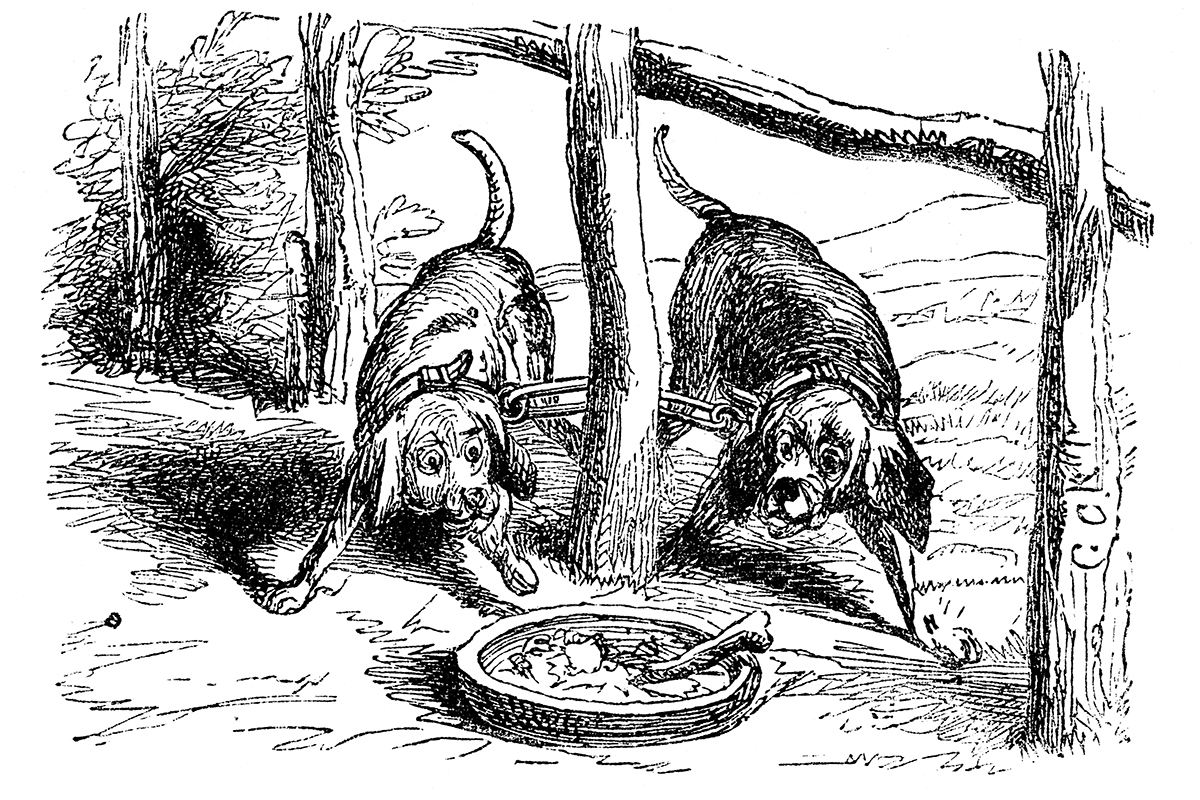Depending upon which department you visit at your favorite university, you will hear some rather different perspectives on property. The common view in humanities departments is that property is a modern, Western European, hegemonic construction, the cause of all wars and quarrels in the world. This is not hyperbole. One of its patron philosophers from the 18th century, Jean-Jacques Rousseau, imagined “what miseries and horrors would the human race have been spared…” had we not “forg[otten] that the fruits of the earth belong to all and the earth to no one.” In the 19th century, Pierre-Joseph Proudhon declared, with clever moral inversion, what many still believe: “Property is theft!”
Across the quad in the natural sciences building, biologists will tell you that property is ubiquitous in the animal kingdom. Male baboons own the females in their harems. Red squirrels treat the tree in the backyard as their property. And bottlenose dolphins behave like that rare delicacy of a Spanish mackerel belongs to the dolphin holding it with his mouth. Birds also defend their claims against interlopers; western scrub jays, for example, protect their food caches from theft by re-hiding them if a potential pilferer caught a glimpse of the initial caching.
So on one side of campus, only some modern human beings have property, but on the other side, all sorts of animals have property in food, mates, and territory. In the building in between, home to the soft and squishy social sciences, people simultaneously entertain both views. Social scientists will say that, based on everyday experience, it certainly looks like the family dog has property when he jealously guards his bone, and those same professors will tell you that 17th-century Native Americans did not have notions of property like their European conquerors had. As a middling social scientist myself, let me propose a sticky compromise: All humans have property in things, and Homo sapiens is the only animal to have property in things.
As with most compromises, no one will be happy with this one. Current thinking in biology is that the gap between humans and all other animals is small. (Only human hubris makes humans exceptional in the animal kingdom.) The thinking in humanities departments is that the number and scope of human universals is so small that there are more important cultural things to talk about and social problems to attend to. (Only humans pride themselves on building the world as they imagine they can design it.) Social scientists, betwixt and between, blame themselves for not designing a better world (as only an exceptional animal can).
All humans have property in things, and Homo sapiens is the only animal to have property in things.
Part of the difficulty in talking about property is that the different disciplines talk past each other in their own languages. To convince you my compromise has some credence, I need to provide you with a common framework for thinking about property, a few open questions that frame the problem of explaining what property is, and some hard-to-dispute facts that neither the humanities nor the natural sciences—nor the social sciences in the middle unconsciously channeling both colleges—are synthesizing into a meaningful explanation of property.
First, and most obviously, all animals must use things to preserve the individual organism and propagate the species. Such things include food, mates, and shelter from the elements. All mammals also live in territories that they defend against other members of the same species. Mammals, though, do not defend their territories for the land or space itself. They defend territories for the food, mates, and shelters inside it. Consequently, the first feature of my framework is that property is about things first and land or territories second.
The second feature is that both an animal’s physical body and the environment in which it resides explain how an organism acts with regard to things. We thus have two potential sources of property to consider: the genes in our bodies and the people and things around us. A genetic explanation would mean property is universal to the species, but an environmental or socially transmitted explanation could mean that different groups of people think about property very differently, or some maybe even not at all. At this point we do not know if our genes or our environment explains property—or if, and here’s a crazy idea, perhaps the answer lies to some degree in both—but we have a common framework, and we can ask questions of it.
So what do biologists’ examples of nonhuman property have in common? Whatever nonhuman property might be, the effect of it is that male baboons, red squirrels, scrub jays, and dogs defend themselves against dispossession. If another animal attempts to acquire the thing in question, even if the animal is not currently using it, it will aggressively bear its teeth and make some noise. No parent has to teach its young to defend against dispossession. Such a response is inherited, and we can see why. Patsy progeny are less likely to reproduce if they give up their food or mate without at least the appearance of being willing to fight for it. Likewise, no human parent in any community teaches their child to resist attempts to take things securely within their grasp. Children are natural-born possessors.
Possession, however, is only nine points of the law. The last tenth is important. Another difficulty in talking about property around campus is that nine-tenths of our focus is on the effects of property. Every nonhuman example of property from biology—baboons, squirrels, dolphins, scrub jays, and dogs—is about the possession, exclusive use, and defense of food, mates, or territory in nature. Every human example of the absence of property from the humanities—think non-Western European societies—is about the non-exclusive use of certain things by certain peoples. Biology compares like effects across species and the humanities compare unlike effects within a species. But it is when we consider the origins of property in humans, and not simply its like and unlike effects, that we can begin to trace out what property is and how it works.
Many nonhuman species pass down practices about how to acquire things. Brown-headed cowbirds learn courtship songs and orangutans learn to how make and use tools for extracting food. Human beings, though, appear to be the only species to teach their progeny how not to acquire things. “No!” is how all parents teach their children the rules of how to acquire—or not acquire—things in the presence of other members of their species. Thou shalt not steal. (No linguist has found a language without the logical concept of “not.”) Every generation of children must be taught the difference between the good and bad ways to acquire things in their community.
Even if a pair of Hello Kitty mittens hanging on a wall hook is identical to a pair lying on the floor, a child distinguishes between the two in such a way as to grab the pair that is “Mine!,” regardless of which pair is the closest to them. Property is not the effect of leaving the closer pair of mittens on the floor. Property is not the effect of exclusively using the second pair of mittens on the hook. Property is not resisting the dispossession of the mittens within one’s grasp. Property is in the original perception that the two pairs of mittens are distinctly different things in the mind’s eye. Property is knowing from experience that one pair is “mine,” and the other is not.
Our human minds perceive the world of people and things through a socially transmitted custom of when you can and cannot say, “This thing is mine.” Property is a custom. It resides in our environment—well, partly.
The other part of property, of course, is in our genes. In every human language someone can say, “This (thing) is mine,” and in every human language everyone knows exactly what that means. Linguists have found no exceptions. Children do not have to be taught the concept of “mine.” They acquire it all on their own, or so parents tell me. Moreover, every human community distinguishes things that belong to the individual from things that belong to others. Not every human community has property in land, but all human groups have property in tools, utensils, and ornaments. However minimal it may be, there are some things about which only a particular individual can say, “This is mine.” Not all spears or ceremonial ornaments are the same. Like lacrosse sticks and Hello Kitty mittens, the custom is such that there is but one individual who can wield or wear it.
If every human community recognizes property in tools, utensils, and ornaments, and if someone in every human community can say, “This thing is mine!” about something, then it would appear, contra the humanities, that all humans have property in things. And if property is fundamentally about not stealing, and humans are the only species that learns from mentors how not to acquire things, then it would appear, contra the biologists, that Homo sapiens is the only animal to have property in things.
Given these realities, it would also appear, contra the humanities, that property is indeed transmitted genetically. An open question, then, is why and how do humans universally perceive property in tools, utensils, and ornaments? Another open question is how did a genetically transmitted behavior regarding food and mates in nonhumans become a socially transmitted behavior about how not to acquire things like tools—not just food or mates—in humans? My answer, contra the numerous assertions by example in biology: It didn’t. But for the full argument on how humans universally and uniquely cognize property, you will have to read my book. (I did warn you that no one would be happy with my compromise.)
This article is drawn from Wilson’s book manuscript, The Property Species: Mine, Yours, and the Human Mind, published August 2020 by Oxford University Press.




